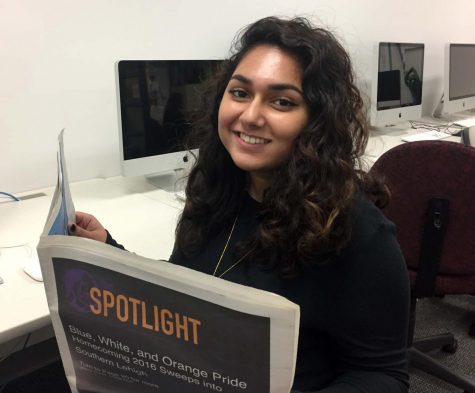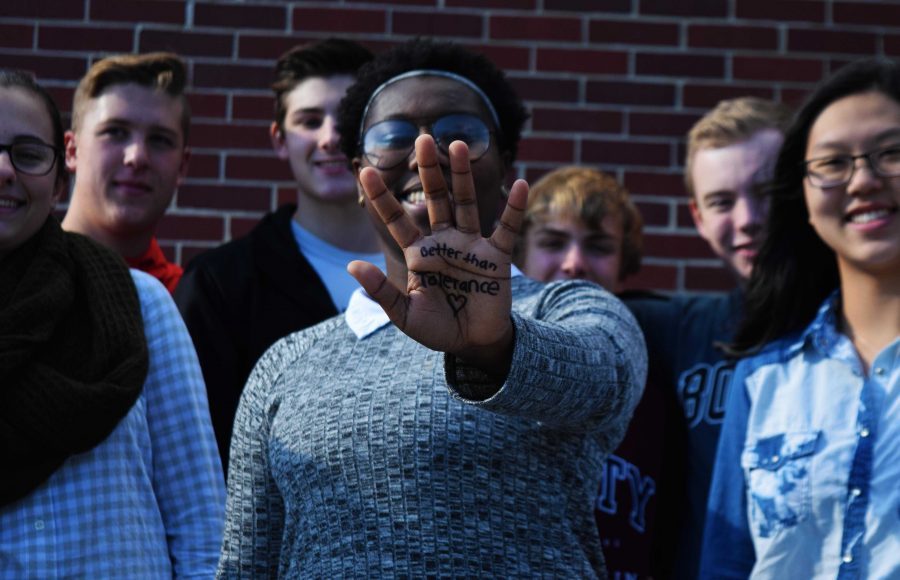A Call for Multiculturalism in School Curriculums
The dictionary defines multiculturalism as “the presence of, or support for the presence of, several distinct cultural or ethnic groups within a society.” Considering the vast diversity of the United States, one would assume that multiculturalism is a widely accepted idea, integrated into citizens’ daily lives. Unfortunately, this is not the reality. Partially due to the current political climate, closed-mindedness, racism, and discrimination are prevalent in America. In our country today, the idea of multiculturalism is rarely encouraged or acted upon. We must encourage tolerance, celebrate diversity, and promote multiculturalism, especially in school environments.
“Understanding and learning about different cultures, groups of people, and ways of life helps people become more open-minded and tolerant individuals,” social studies teacher Mr. Lee Zeisloft said. “Our country needs more of that at a young age to help [students] progress and develop.”
According to a 2016 report by the Teachers College of Columbia University, “the benefits of school diversity run in all directions.” This is in reference to the increasing evidence that diversity promotes intelligence. According to the authors of the study, students’ exposure to other students who are different from themselves leads to improved cognitive skills, such as critical thinking and problem solving.
The idea of introducing multicultural concepts in schools is an educational movement based on American values such as freedom, justice, opportunity, and equality. The main goals of multicultural education include creating an accepting learning environment, increasing awareness of global issues, strengthening cultural consciousness and interracial awareness, informing students of multiple historical perspectives, and preventing prejudice and discrimination. These are all positive objectives needed in the world, and the best way to ensure that they happen is by educating future generations.
“Looking at today’s environment and political landscape, being tolerant about different ideas is a success of civil discourse,” Mr. Zeisloft said.
Integrating multiculturalism into curricula where it would apply, such as English and social studies courses, would create a future advanced by tolerant, open-minded people. Understanding other cultures and religions will ease the tension that exists in this country towards foreigners and immigrants. For example, if students learned about the actual beliefs of Islam, it would be widely understood that the religion of Islam does not promote violence. If education regarding multiculturalism does not increase, racism and unjustifiable hatred towards those who are different will prevail.
“I do believe there is a need for [multicultural education] in our school because not every school is going to have a high level of diversity,” senior Vanessa Oviedo said. “This means that students will not be exposed to as many cultures. To combat this, I think that multiculturalism in schools could be beneficial for everyone because this can help combat prejudice and stereotypes that students may have for certain groups of people.”
A traditional complaint pertaining to English classes is why curriculum only includes stories written by “dead white guys.” While I do believe it is essential to read various classic literature in able to understand how our culture and society has progressed over time, incorporating modern texts is necessary to helping students enhance their mind and knowledge of today’s world.
Fortunately, at Southern Lehigh High School, we are making progress. For example, in Honors English 11, students read “The Kite Runner” by Khaled Hosseini, which incorporates Afghani culture, enabling students to explore a culture that they never before experienced in literature.
“[Students] are going to live in a very global world, so [the school] needs to bring the multicultural perspective into a little place like Southern Lehigh, which has a limited world-view,” English teacher Mr. Jeff Hershey said. “[Students] are going to have contact with people from all different races and religions and backgrounds, and they need to understand [different] perspectives of the world.
Additionally, the twelfth grade English course has changed significantly to include more diverse works, which focus on a wide variety of topics such as the Iranian revolution, or the prejudice faced by a Muslim man during Hurricane Katrina. These texts display customs and ideas of societies dissimilar to ours and encourage open-mindedness and willingness to understand different cultures.
“It would be absurd to limit students’ viewpoints and perspectives,” English teacher Mrs. Lauren Tocci said. “Our school’s literature should look like the world we live in. It should be representative beyond the boundaries of classic literature. We are not dishonoring [classic literature], but honoring these [new] voices.”
As our country becomes more diverse, we as a society must become more progressive. We must create a tolerant society, and ensure that “with freedom and justice for all” becomes a true statement. By incorporating different perspectives in academic curricula, encouraging students to embrace diversity, and acknowledging personal biases, multiculturalism is an obtainable goal in the future of education. Students must learn to be tolerant of other cultures and people who come from different backgrounds in order to foster a more peaceful, accepting world.
“We are all better when we learn from experiences that are not our own,” Mrs. Tocci said. “When we only hear voices the same as us, we are never growing as people.”

Senior Izza Choudhry is a four-year staff reporter and former one-year copy editor and one-year news editor, now serving as opinion editor for the Spotlight....


